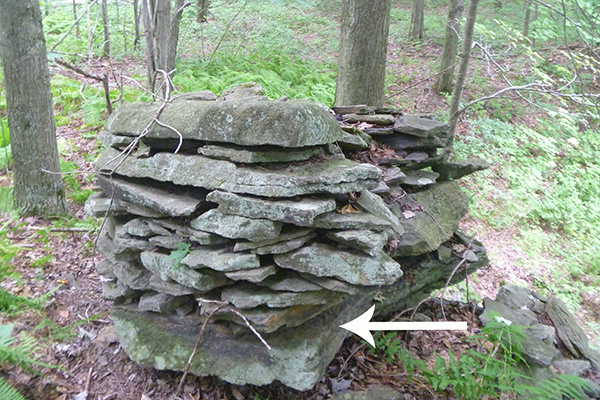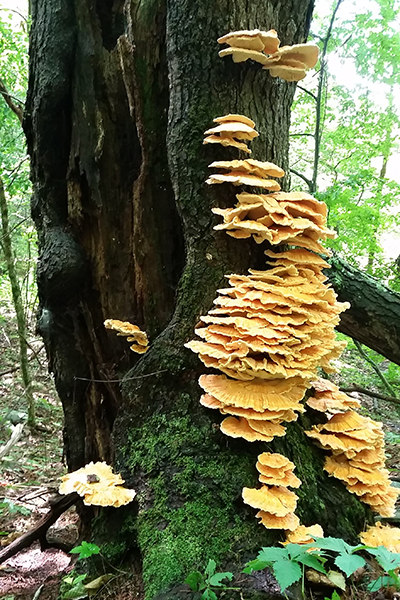On a recent woods walk I found something I’d never seen before: half a dozen mounds of stacked stones. Each pile was about 3 to 4 feet high, and they varied from 6 to 15 feet wide.
On a recent woods walk I found something I’d never seen before: half a dozen mounds of stacked stones. Each pile was about 3 to 4 feet high, and they varied from 6 to 15 feet wide.
What are these piles? They’re obviously manmade; they’re stacked too well to be natural. But who made them? Why did they go to all this work to build stone piles in the middle of the woods?

A Google search offers ideas, but even ruling out “signals to aliens,” I’m still left with several options.
The first is something I’ve seen along some trails: cairns. These stone mounds mark trails and the tops of some hills. Humans have used them for navigation for centuries. We have an activity on MyWoodlot about marking your trails that includes using cairns in its how-to information.
But the piles I’ve found aren’t cairns. They aren’t along a trail. They aren’t even in a straight line. They’re at best midway up the hill, so they don’t mark a summit either.
The next possibility is that they could be Native American sites. Stone mounds could serve as navigational markers or burial grounds. But I’ve already ruled out navigation, and the haphazard placement just doesn’t fit with a spiritual or religious purpose.
I’ll need to dig deeper to understand these stone piles. My first clue is the age of the trees around them. They’re not that tall, and they’re pretty narrow. These woods are young, maybe 30 years or so. Before that this area was a farm field, probably cow pasture.
A look at a historic USGS topo map for the site confirms that history. Topos use green to designate woods and white to show fields. On older maps (the oldest for this site dates to 1918), the area where these boulders are is white.
A former farm pasture could explain the stones. 1800’s Northeast farmers needed to clear stones from their fields to plant crops and pasture livestock. You can see their legacies today in the form of stone walls. Beyond providing a spot for the seemingly endless stones, these walls marked property boundaries and kept livestock in the right field.
But the mounds I found don’t join together, nor do they mark a boundary. Why would a farmer pile stones in the middle of his field? Wouldn’t they get in his way?
A closer look at one of the piles reveals the vital clue. The pile’s base is a massive boulder. No 1800’s farmer would be moving that. He would have had to work around it. And if he had to work around it anyway, why not use it as a place to put other rocks from the field?

That’s my guess for these random stone piles. Am I right? Am I way off base? I’d love to hear from someone who knows some rural Northeast history. If you have a thought on these stone piles, please share it in the comments.





